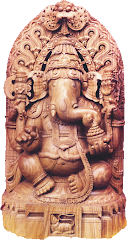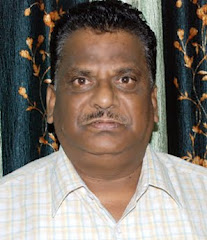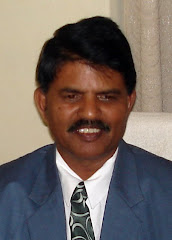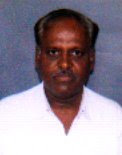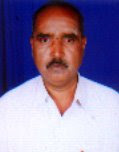

Chitradurga District Science Teachers' Club
Richard F. Heck
Born: 1931, Springfield, MA, USA
Affiliation at the time of the award: University of Delaware, USA
Prize motivation: "for palladium-catalyzed cross couplings in organic synthesis"

Ei-ichi Negishi
Born: 1935
Affiliation at the time of the award: Purdue University, West Lafayette, IN, USA
Prize motivation: "for palladium-catalyzed cross couplings in organic synthesis"

Akira Suzuki
Born: 1930, Mukawa, Japan
Affiliation at the time of the award: Hokkaido University, Sapporo, Japan
Prize motivation: "for palladium-catalyzed cross couplings in organic synthesis"

The Nobel Prize in Chemistry 2010 was awarded jointly to Richard F. Heck, Ei-ichi Negishi and Akira Suzuki "for palladium-catalyzed cross couplings in organic synthesis".
http://nobelprize.org/nobel_prizes/chemistry/laureates/2010/press.html
 |
|
6 October 2010
The Royal Swedish Academy of Sciences has decided to award the Nobel Prize in Chemistry for 2010 to
Richard F. Heck
University of Delaware, Newark, DE, USA,
Ei-ichi Negishi
Purdue University, West Lafayette, IN, USA
and
Akira Suzuki
Hokkaido University, Sapporo, Japan
"for palladium-catalyzed cross couplings in organic synthesis"
Organic chemistry has developed into an art form where scientists produce marvelous chemical creations in their test tubes. Mankind benefits from this in the form of medicines, ever-more precise electronics and advanced technological materials. The Nobel Prize in Chemistry 2010 awards one of the most sophisticated tools available to chemists today.
This year's Nobel Prize in Chemistry is awarded to Richard F. Heck, Ei-ichi Negishi and Akira Suzuki for the development of palladium-catalyzed cross coupling. This chemical tool has vastly improved the possibilities for chemists to create sophisticated chemicals, for example carbon-based molecules as complex as those created by nature itself.
Carbon-based (organic) chemistry is the basis of life and is responsible for numerous fascinating natural phenomena: colour in flowers, snake poison and bacteria killing substances such as penicillin. Organic chemistry has allowed man to build on nature's chemistry; making use of carbon’s ability to provide a stable skeleton for functional molecules. This has given mankind new medicines and revolutionary materials such as plastics.
In order to create these complex chemicals, chemists need to be able to join carbon atoms together. However, carbon is stable and carbon atoms do not easily react with one another. The first methods used by chemists to bind carbon atoms together were therefore based upon various techniques for rendering carbon more reactive. Such methods worked when creating simple molecules, but when synthesizing more complex molecules chemists ended up with too many unwanted by-products in their test tubes.
Palladium-catalyzed cross coupling solved that problem and provided chemists with a more precise and efficient tool to work with. In the Heck reaction, Negishi reaction and Suzuki reaction, carbon atoms meet on a palladium atom, whereupon their proximity to one another kick-starts the chemical reaction.
Palladium-catalyzed cross coupling is used in research worldwide, as well as in the commercial production of for example pharmaceuticals and molecules used in the electronics industry.
Richard F. Heck, American citizen. Born 1931 in Springfield, MA, USA. Ph.D. 1954 from University of California Los Angeles (UCLA), CA, USA. Willis F. Harrington Professor Emeritus at University of Delaware, Newark, DE, USA.
Ei-ichi Negishi, Japanese citizen. Born 1935 in Changchun, China (former Japan). Ph.D. 1963 from University of Pennsylvania, Philadelphia, PA, USA. Herbert C. Brown Distinguished Professor of Chemistry at Purdue University, West Lafayette, IN, USA.
www.chem.purdue.edu/negishi/index.htm
Akira Suzuki, Japanese citizen. Born 1930 in Mukawa, Japan. Ph.D. 1959, Distinguished Professor Emeritus, both at Hokkaido University, Sapporo, Japan.
The Prize amount: SEK 10 million to be shared equally between the Nobel Laureates
Contacts: Erik Huss, Press Officer, phone +46 8 673 95 44, +46 70 673 96 50, erik.huss@kva.se
Annika Moberg, Editor, Phone +46 8 673 95 22, +46 70 263 74 46, annika.moberg@kva.se
The Royal Swedish Academy of Sciences, founded in 1739, is an independent organization whose overall objective is to promote the sciences and strengthen their influence in society. The Academy takes special responsibility for the natural sciences and mathematics, but endeavours to promote the exchange of ideas between various disciplines.

Scientific Background
Pdf 1 Mb

Information for the Public
Pdf 1 Mb
 http://nobelprize.org/nobel_prizes/physics/laureates/2010/
http://nobelprize.org/nobel_prizes/physics/laureates/2010/
The Nobel Prize in Physics 2010 was awarded jointly to Andre Geim and Konstantin Novoselov "for groundbreaking experiments regarding the two-dimensional material graphene"
Andre Geim
Born: 1958, Sochi, Russia
Affiliation at the time of the award: University of Manchester, Manchester, United Kingdom
Prize motivation: "for groundbreaking experiments regarding the two-dimensional material graphene"

Konstantin Novoselov
Born: 1974, Nizhny Tagil, Russia
Affiliation at the time of the award: University of Manchester, Manchester, United Kingdom
Prize motivation: "for groundbreaking experiments regarding the two-dimensional material graphene"


Information for the Public
Pdf 1,6 Mb ![]()
 |
| Graphene is an atomic-scale honeycomb lattice made of carbon atoms. Photo: Alexander Alus, licensed by Creative Commons Attribution-Share Alike 3.0 |
 |
|
5 October 2010
The Royal Swedish Academy of Sciences has decided to award the Nobel Prize in Physics for 2010 to
Andre Geim
University of Manchester, UK
and
Konstantin Novoselov
University of Manchester, UK
"for groundbreaking experiments regarding the two-dimensional material graphene"
A thin flake of ordinary carbon, just one atom thick, lies behind this year’s Nobel Prize in Physics. Andre Geim and Konstantin Novoselov have shown that carbon in such a flat form has exceptional properties that originate from the remarkable world of quantum physics.
Graphene is a form of carbon. As a material it is completely new – not only the thinnest ever but also the strongest. As a conductor of electricity it performs as well as copper. As a conductor of heat it outperforms all other known materials. It is almost completely transparent, yet so dense that not even helium, the smallest gas atom, can pass through it. Carbon, the basis of all known life on earth, has surprised us once again.
Geim and Novoselov extracted the graphene from a piece of graphite such as is found in ordinary pencils. Using regular adhesive tape they managed to obtain a flake of carbon with a thickness of just one atom. This at a time when many believed it was impossible for such thin crystalline materials to be stable.
However, with graphene, physicists can now study a new class of two-dimensional materials with unique properties. Graphene makes experiments possible that give new twists to the phenomena in quantum physics. Also a vast variety of practical applications now appear possible including the creation of new materials and the manufacture of innovative electronics. Graphene transistors are predicted to be substantially faster than today’s silicon transistors and result in more efficient computers.
Since it is practically transparent and a good conductor, graphene is suitable for producing transparent touch screens, light panels, and maybe even solar cells.
When mixed into plastics, graphene can turn them into conductors of electricity while making them more heat resistant and mechanically robust. This resilience can be utilised in new super strong materials, which are also thin, elastic and lightweight. In the future, satellites, airplanes, and cars could be manufactured out of the new composite materials.
This year’s Laureates have been working together for a long time now. Konstantin Novoselov, 36, first worked with Andre Geim, 51, as a PhD-student in the Netherlands. He subsequently followed Geim to the United Kingdom. Both of them originally studied and began their careers as physicists in Russia. Now they are both professors at the University of Manchester.
Playfulness is one of their hallmarks, one always learns something in the process and, who knows, you may even hit the jackpot. Like now when they, with graphene, write themselves into the annals of science.
| Read more about this year's prize |
| Information for the Public |
| Scientific Background (pdf) |
| In order to read the text you need Acrobat Reader. |
| Links and Further Reading |
Andre Geim, Dutch citizen. Born 1958 in Sochi, Russia. Ph.D. 1987 from Institute of Solid State Physics, Russian Academy of Sciences, Chernogolovka, Russia. Director of Manchester Centre for Meso-science & Nanotechnology, Langworthy Professor of Physics and Royal Society 2010 Anniversary Research Professor, University of Manchester, UK.
www.condmat.physics.manchester.ac.uk/people/academic/geim
Konstantin Novoselov, Brittish and Russian citizen. Born 1974 in Nizhny Tagil, Russia. Ph.D. 2004 from Radboud University Nijmegen, The Netherlands. Professor and Royal Society Research Fellow, University of Manchester, UK.
www.condmat.physics.manchester.ac.uk/people/academic/novoselov
Prize amount: SEK 10 million to be shared equally between the Nobel Laureates.
Contact persons: Erik Huss, Press Officer, Phone +46 8 673 95 44, mobile +46 70 673 96 50, erik.huss@kva.se
Fredrik All, Editor, Phone +46 8 673 95 63, Mobile +46 70 673 95 63, fredrik.all@kva.se
The Royal Swedish Academy of Sciences, founded in 1739, is an independent organization whose overall objective is to promote the sciences and strengthen their influence in society. The Academy takes special responsibility for the natural sciences and mathematics, but endeavours to promote the exchange of ideas between various disciplines.
Congratulations!
 Nobel Prize for Medicine 2010 Robert G. Edwards for the Development of in vitro fertilization
Nobel Prize for Medicine 2010 Robert G. Edwards for the Development of in vitro fertilization
Robert G. Edwards
Born: 1925, Manchester, United Kingdom
Affiliation at the time of the award: University of Cambridge, Cambridge, United Kingdom
Prize motivation: "for the development of in vitro fertilization"
2010-10-04
The Nobel Assembly at Karolinska Institutet has today decided to award
The Nobel Prize in Physiology or Medicine 2010
to
Robert G. Edwards
for the development of in vitro fertilization
Robert Edwards is awarded the 2010 Nobel Prize for the development of human in vitro fertilization (IVF) therapy. His achievements have made it possible to treat infertility, a medical condition afflicting a large proportion of humanity including more than 10% of all couples worldwide.
As early as the 1950s, Edwards had the vision that IVF could be useful as a treatment for infertility. He worked systematically to realize his goal, discovered important principles for human fertilization, and succeeded in accomplishing fertilization of human egg cells in test tubes (or more precisely, cell culture dishes). His efforts were finally crowned by success on 25 July, 1978, when the world's first "test tube baby" was born. During the following years, Edwards and his co-workers refined IVF technology and shared it with colleagues around the world.
Approximately four million individuals have so far been born following IVF. Many of them are now adult and some have already become parents. A new field of medicine has emerged, with Robert Edwards leading the process all the way from the fundamental discoveries to the current, successful IVF therapy. His contributions represent a milestone in the development of modern medicine.
More than 10% of all couples worldwide are infertile. For many of them, this is a great disappointment and for some causes lifelong psychological trauma. Medicine has had limited opportunities to help these individuals in the past. Today, the situation is entirely different. In vitro fertilization (IVF) is an established therapy when sperm and egg cannot meet inside the body.
The British scientist Robert Edwards began his fundamental research on the biology of fertilization in the 1950s. He soon realized that fertilization outside the body could represent a possible treatment of infertility. Other scientists had shown that egg cells from rabbits could be fertilized in test tubes when sperm was added, giving rise to offspring. Edwards decided to investigate if similar methods could be used to fertilize human egg cells.
It turned out that human eggs have an entirely different life cycle than those of rabbits. In a series of experimental studies conducted together with several different co-workers, Edwards made a number of fundamental discoveries. He clarified how human eggs mature, how different hormones regulate their maturation, and at which time point the eggs are susceptible to the fertilizing sperm. He also determined the conditions under which sperm is activated and has the capacity to fertilize the egg. In 1969, his efforts met with success when, for the first time, a human egg was fertilized in a test tube.
In spite of this success, a major problem remained. The fertilized egg did not develop beyond a single cell division. Edwards suspected that eggs that had matured in the ovaries before they were removed for IVF would function better, and looked for possible ways to obtain such eggs in a safe way.
Edwards contacted the gynecologist Patrick Steptoe. He became the clinician who, together with Edwards, developed IVF from experiment to practical medicine. Steptoe was one of the pioneers in laparoscopy, a technique that was new and controversial at the time. It allows inspection of the ovaries through an optical instrument. Steptoe used the laparoscope to remove eggs from the ovaries and Edwards put the eggs in cell culture and added sperm. The fertilized egg cells now divided several times and formed early embryos, 8 cells in size (see figure).
These early studies were promising but the Medical Research Council decided not to fund a continuation of the project. However, a private donation allowed the work to continue. The research also became the topic of a lively ethical debate that was initiated by Edwards himself. Several religious leaders, ethicists, and scientists demanded that the project be stopped, while others gave it their support.
Edwards and Steptoe could continue their research thanks to the new donation. By analyzing the patients' hormone levels, they could determine the best time point for fertilization and maximize the chances for success. In 1978, Lesley and John Brown came to the clinic after nine years of failed attempts to have a child. IVF treatment was carried out, and when the fertilized egg had developed into an embryo with 8 cells, it was returned to Mrs. Brown. A healthy baby, Louise Brown, was born through Caesarian section after a full-term pregnancy, on 25 July, 1978. IVF had moved from vision to reality and a new era in medicine had begun.
Edwards and Steptoe established the Bourn Hall Clinic in Cambridge, the world's first centre for IVF therapy. Steptoe was its medical director until his death in 1988, and Edwards was its head of research until his retirement. Gynecologists and cell biologists from all around the world trained at Bourn Hall, where the methods of IVF were continuously refined. By 1986, 1,000 children had already been born following IVF at Bourn Hall, representing approximately half of all children born after IVF in the world at that time.
Today, IVF is an established therapy throughout the world. It has undergone several important improvements. For example, single sperm can be microinjected directly into the egg cell in the culture dish. This method has improved the treatment of male infertility by IVF. Furthermore, mature eggs suitable for IVF can be identified by ultrasound and removed with a fine syringe rather than through the laparoscope.
IVF is a safe and effective therapy. 20-30% of fertilized eggs lead to the birth of a child. Complications include premature births but are very rare, particularly when one egg only is inserted into the mother. Long-term follow-up studies have shown that IVF children are as healthy as other children.
Approximately four million individuals have been born thanks to IVF. Louise Brown and several other IVF children have given birth to children themselves; this is probably the best evidence for the safety and success of IVF therapy. Today, Robert Edwards' vision is a reality and brings joy to infertile people all over the world.
Robert G. Edwards was born in 1925 in Manchester, England. After military service in the Second World War, he studied biology at the University of Wales in Bangor and at Edinburgh University in Scotland, where he received his PhD in 1955 with a Thesis on embryonal development in mice. He became a staff scientist at the National Institute for Medical Research in London in 1958 and initiated his research on the human fertilization process. From 1963, Edwards worked in Cambridge, first at its university and later at Bourn Hall Clinic, the world's first IVF centre, which he founded together with Patrick Steptoe. Edwards was its research director for many years and he was also the editor of several leading scientific journals in the area of fertilization. Robert Edwards is currently professor emeritus at the University of Cambridge.
| References: |
Edwards RG. Maturation in vitro of human ovarian oocytes. Lancet 1965; 2:926-929. |
Edwards RG, Bavister BD, Steptoe PC. Early stages of fertilization in vitro of human oocytes matured in vitro. Nature 1969; 221:632-635. |
Edwards RG, Steptoe PC, Purdy JM. Fertilization and cleavage in vitro of human oocytes matured in vivo. Nature 1970; 227:1307-1309. |
Steptoe PC, Edwards RG. Birth after the reimplantation of a human embryo. Lancet 1978; 2:366. |
Edwards RG. The bumpy road to human in vitro fertilization. Nature Med 2001; 7:1091-4. |
 High resolution image (pdf 6 Mb)
High resolution image (pdf 6 Mb)
The Nobel Assembly, consisting of 50 professors at Karolinska Institutet, awards the Nobel Prize in Physiology or Medicine. Its Nobel Committee evaluates the nominations. Since 1901 the Nobel Prize has been awarded to scientists who have made the most important discoveries for the benefit of mankind.
http://nobelprize.org/nobel_prizes/medicine/laureates/2010/press.html
![]()

Nowadays, there perhaps doesn't seem to be anything too remarkable about IVF (in vitro fertilization). With around 4 million babies so far born as a result of the technique, it has become a familiar and, for many, easily-accessible option to turn to when problems are encountered in conceiving a child. The idea of giving new life a boost by allowing sperm and egg to meet in the well-regulated surroundings of the laboratory is something we've come to rely on.
It wasn't always so. When, in the 1950s, Robert Edwards started contemplating his vision of helping childless couples to conceive by fertilizing the mothers' eggs outside the body and then replacing them in the womb, relatively little was known about human embryology. Although in vitro fertilization had already been demonstrated to work for other species under certain circumstances, the human reproductive cycle was discovered to be very different from that of other mammals. Before performing the feat of fertilization Edwards had therefore to determine the baseline conditions, such as when in their life cycle human eggs can be fertilized, what substances control their progress through that cycle and what conditions produce activated sperm that can actually fertilize an egg. In the process, he revealed much of what we know about human reproduction.
This groundwork seemed to come to fruition with Edwards' first demonstration of human in vitro fertilization in 1969, but these fertilized eggs never underwent more than a single cell division. Seeking an alternative source of human eggs, Edwards teamed-up with Patrick Steptoe, a gynaecologist, whose experimentation with the newly-introduced technique of laparoscopy allowed him to remove suitable eggs directly from women's ovaries. With this improvement, eggs fertilized in the laboratory fared better, dividing a number of times. However, barriers of a different sort now presented themselves. In 1971, in the midst of both societal and establishment resistance to the research, Edwards and Steptoe's funding organization, the UK's Medical Research Council, decided not to continue to support their work. The project was fortunately saved by private funding and in 1978, more than two decades after Edwards had his vision, Louise Brown, the world's first ‘test tube baby', was famously born in Oldham General Hospital in the UK.
Two years later Edwards and Steptoe founded the world's first centre for IVF treatment, the Bourn Hall Clinic near Cambridge, UK. Uptake of the technique spread widely and by 1986 there had been around 2000 births, half of them resulting from the work at Bourne Hall. Patrick Steptoe died in 1988, sadly too early to see the first generation of IVF babies grow into adulthood and witness the final confirmation, made apparent by their robust good health, of the overall safety of the procedure. Thirty-two years after that first IVF birth, the 4 million ‘IVF babies' worldwide now have a rather unusual boast: who else can say that the method of their conception was worthy of a Nobel Prize?
 |
| Professor Robert Edwards at the Bourn Hall 30th birthday celebrations for first "test tube baby" Louise Brown. Photo taken 12 July 2008. Photo: Kindly provided by Bourn Hall Clinic. |
 |
| Professor Robert Edwards, Lesley Brown, Louise Brown, the world's first "test tube baby" with her son Cameron. Photo taken 12 July 2008. Photo: Kindly provided by Bourn Hall Clinic. |
 |
| Louise Brown, the world's first "test tube baby" with her mother Lesley. Photo taken 9 October, 1978. Photo: Brian Bould / Daily Mail / Rex Features /IBL Bildbyrå |
 |
| Professor Robert Edwards at his desk at Bourn Hall Clinic, England. Photo taken in 1989. Photo: CORBIN O'GRADY STUDIO/ Science Photo Library / IBL Bildbyrå |
 |
| Human embryos developing in vitro. The photos show a fertilized egg, 8-cell stage, cell adhesion, a compacted morula, a blastocyst and zona hatching. Photo: Wikipedia (http://en.wikipedia.org/wiki/File:Early_human_embryos.png) |
 |
| A light microscope image showing in vitro fertilization of an ovum. A needle (right) is used to inject a sperm cell directly into a human egg (centre). The broad object (left) is a pipette used to hold the ovum steady while the needle is inserted. Photo: CC STUDIO/ SCIENCE PHOTO LIBRARY / IBL Bildbyrå |
 |
| A light micrograph image showing the encounter between sperm and ovum during in vivo fertilization. A single sperm is seen in centre of the image approaching the circular oocyte. Other competing sperm and cells encompass the corona radiata, which forms a protective halo around the central oocyte, are visible at bottom. Photo: EDELMANN/SCIENCE PHOTO LIBRARY / IBL Bildbyrå |
http://nobelprize.org/nobel_prizes/medicine/laureates/2010/edwards-photo.html
